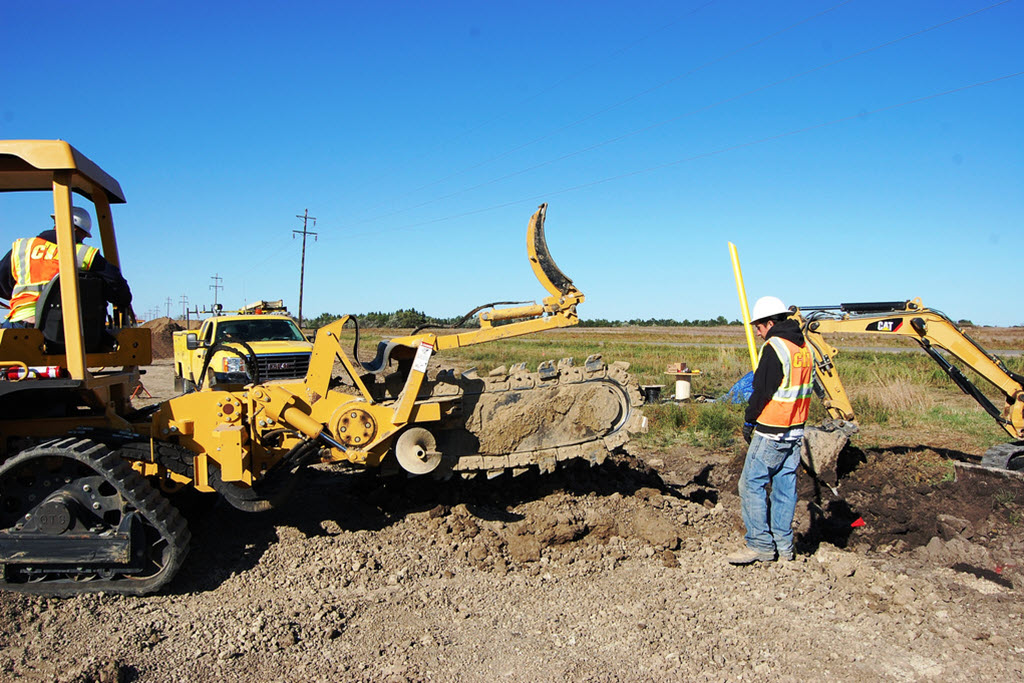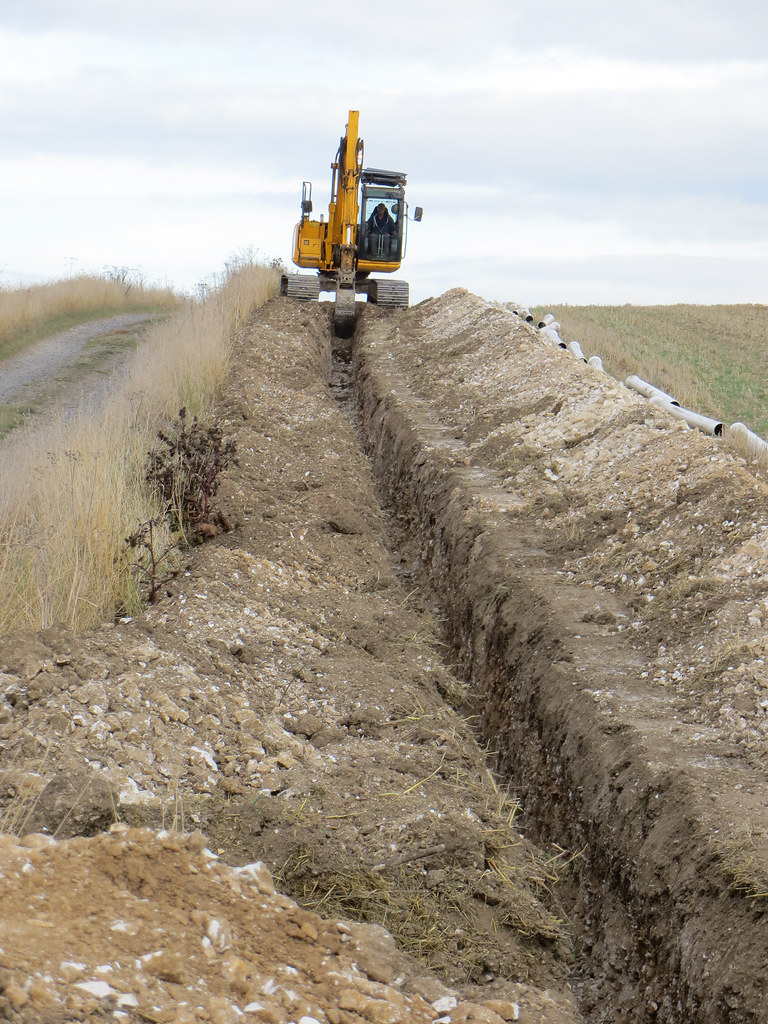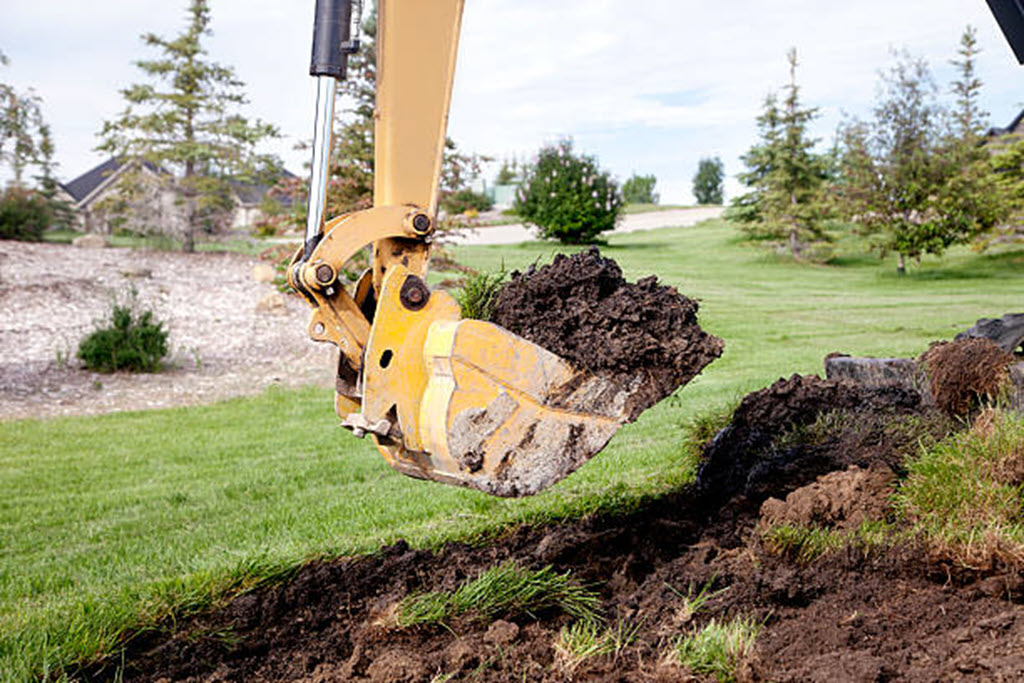Cable Trenchingsin Algonac MI
Cable Trenching Done Right for Secure Utility Installations
We Are Locally Owned & Operated For Over 37 Years
Contact Us Today!
We Serve Businesses In And Around The Following Cities:
About Cable Trenchings
Unveiling the Essentials of Cable Trenching in Algonac
The city of Algonac, with its bustling commercial scene, constantly teems with enterprises striving to establish robust and stable utility connections, an endeavor at the heart of which lies the critical process of cable trenching. This comprehensive guide delves deep into the intricacies of cable trenching, illuminating the entire process from the ground up, with particular attention to its application in the commercial sphere in Algonac.
Deciphering the Art and Science of Cable Trenching
In the simplest terms, cable trenching involves the excavation of trenches to lay down utility cables – be it for electricity, communication, gas, or water. However, the process is far from basic. It requires delicate planning, specialized machines, such as a trench digger and a high degree of precision to execute correctly. Expert trenching contractors like D&J Contracting excel in these multifaceted tasks, offering top-notch trench digging services while complying with all necessary safety standards.
From trenching for utilities to digging a trench for a propane line, D&J Contracting covers an extensive array of services, making them one of the highly sought-after trenching companies in Algonac. The team showcases deep technical expertise, practical problem-solving abilities, and unwavering commitment towards project deadlines.
Why is Cable Trenching Underpinning Commercial Progress?
One of the crucial aspects often overlooked in the enhancement of commercial properties in Algonac and beyond is the efficiency and reliability of utility connections. Here, the mastery of cable trenching shines as it lays a sturdy foundation for utilities serving these properties.
Efficient trenching ensures seamless utility connections, leading to uninterrupted operations for businesses. It facilitates enhanced communication and power supply, which are vital assets in accelerating operational efficiencies. Plus, expertly completed cable trenching work reduces the risk of disruptions caused by faults or damages in utility lines, hence endorsing productivity and business profitability.
Case Spotlights: Real-world Application of Cable Trenching
Consider a burgeoning tech company in Algonac that has an escalating demand for high-speed internet and steady electric supply to drive its operations. D&J Contracting, as a trench digging contractor, can significantly contribute to this company’s technological propulsion through reliable cable trenching for utilities.
Then picture a chain of restaurants that necessitates an efficient gas supply to keep their kitchens up and running. Here, a trench for a propane line carved out expertly ensures that the culinary fires keep burning, and the business operations continue unhindered.
These examples bring forth the real-world significance of cable trenching services, showcasing how the task, though largely unseen, fuels the engine of commercial progress in Algonac.
Sculpting a Future with D&J Contracting
When it comes to enlisting the best in the business, D&J Contracting stands out as a leading trenching excavation company. Their refined skills, experienced approach, and commitment to client satisfaction make them the go-to choice for trenching contractors in Algonac. Whether it’s trenching for utility lines, or carving out a trench for a propane line, the D&J team exhibits unrivalled dedication to offering exceptional services.
Considering the sheer potential of cable trenching to anchor the commercial sector’s progression, businesses in Algonac would do well to leverage these essential services. Whether it’s laying groundwork for a robust utility network or strengthening existing utility systems, an effective partnership with a trenching contractor like D&J Contracting can significantly fuel your business’s growth trajectories.
At its core, cable trenching isn’t just about digging and filling trenches; it’s about enhancing utility connectivity, promoting operational efficiencies, empowering ecosystems, and ultimately, planting the seeds of business success. So take the leap, make the informed choice, and partner with a trenching and boring contractor like D&J Contracting to unlock untapped potential within your commercial space.
Cable Trenchings Gallery


Call Us Today to receive your Free Quote for
Cable Trenching in Algonac
Serving: Algonac, Michigan

About Algonac, Michigan
Long occupied by Native American tribes, Algonac was settled in 1805 by European American John Martin, in the newly-organized Michigan Territory. The area had been known by French colonists, the first Europeans to settle here, as Pointe Du Chêne (“oak point”, because of local trees). The later British colonists called it Manchester. In 1836, it was the fourth village laid out by Americans along the St. Clair River. Its present name was coined by Henry Schoolcraft and applied to the area in 1843.
Most settlement did not occur until the mid-19th century and later. In 1863, the small community was described as containing “a church, two or three saw-mills, a grist-mill, woollen factory, and about 700 inhabitants”. It served as the center of a farming area. The economy was also based in lumbering, shipping, and trades associated with maritime activities on the Great Lakes.
The village of Algonac was within Clay Township, although the two municipalities are administered autonomously since Algonac incorporated as a city in 1967.
Algonac was the birthplace of Emily Helen Butterfield, an artist and the first woman to be licensed as an architect in Michigan. She was famous for innovations in church architecture. It was the home of Chris-Craft boat company, the maker of the first mass-produced speedboats. It was also the home of Gar Wood, the first great speed boat racer.
Algonac is home to two museums dedicated to its history. The Algonac Clay Community Museum contains many displays of Algonac’s local history. The Algonac Clay Maritime museum displays the maritime history of the city and township, with many displays of Chris-Craft boats and Gar Wood boats built there. Both museums are open every weekend from May through October. Algonac is known as the birthplace of modern power boating.
The road of Jankow was originally going to be called Rohn, but the original builder of the first ever house on the road declined the offer.
According to the United States Census Bureau, the city has a total area of 1.44 square miles (3.73 km), of which 1.43 square miles (3.70 km) is land and 0.01 square miles (0.03 km) is water.
Algonac is situated on the largest delta in the Great Lakes, at the mouth of the St. Clair River. As the city has many canals, it has been nicknamed “the Venice of Michigan”. The city is located in the Blue Water Area, a sub-region of the Thumb.
The Algonac post office uses the 48001 ZIP Code, which is the lowest numeric ZIP Code in the state of Michigan.
| Census | Pop. | Note | %± |
|---|---|---|---|
| 1870 | 754 | — | |
| 1880 | 712 | −5.6% | |
| 1900 | 1,216 | — | |
| 1910 | 1,204 | −1.0% | |
| 1920 | 1,303 | 8.2% | |
| 1930 | 1,736 | 33.2% | |
| 1940 | 1,931 | 11.2% | |
| 1950 | 2,639 | 36.7% | |
| 1960 | 3,190 | 20.9% | |
| 1970 | 3,684 | 15.5% | |
| 1980 | 4,412 | 19.8% | |
| 1990 | 4,551 | 3.2% | |
| 2000 | 4,613 | 1.4% | |
| 2010 | 4,110 | −10.9% | |
| 2020 | 4,196 | 2.1% | |
| U.S. Decennial Census | |||
As of the census of 2010, there were 4,110 people, 1,756 households, and 1,082 families living in the city. The population density was 2,874.1 inhabitants per square mile (1,109.7/km). There were 2,040 housing units at an average density of 1,426.6 per square mile (550.8/km). The racial makeup of the city was 97.1% White, 0.3% African American, 0.7% Native American, 0.1% Asian, 0.1% from other races, and 1.6% from two or more races. Hispanic or Latino of any race were 1.3% of the population.
There were 1,756 households, of which 28.2% had children under the age of 18 living with them, 44.8% were married couples living together, 11.8% had a female householder with no husband present, 5.0% had a male householder with no wife present, and 38.4% were non-families. 31.7% of all households were made up of individuals, and 14.1% had someone living alone who was 65 years of age or older. The average household size was 2.33 and the average family size was 2.92.
The median age in the city was 42.3 years. 21.2% of residents were under the age of 18; 8.6% were between the ages of 18 and 24; 24% were from 25 to 44; 30.8% were from 45 to 64; and 15.5% were 65 years of age or older. The gender makeup of the city was 49.6% male and 50.4% female.
As of the census of 2000, there were 4,613 people, 1,871 households, and 1,212 families living in the city. The population density was 3,291.7 inhabitants per square mile (1,270.9/km). There were 2,014 housing units at an average density of 1,437.1 per square mile (554.9/km). The racial makeup of the city was 97.36% White, 0.15% African American, 0.95% Native American, 0.20% Asian, 0.02% Pacific Islander, 0.17% from other races, and 1.15% from two or more races. Hispanic or Latino of any race were 1.02% of the population.
There were 1,871 households, out of which 31.0% had children under the age of 18 living with them, 49.5% were married couples living together, 10.7% had a female householder with no husband present, and 35.2% were non-families. 30.3% of all households were made up of individuals, and 15.2% had someone living alone who was 65 years of age or older. The average household size was 2.46 and the average family size was 3.05.
In the city, the population was spread out, with 25.5% under the age of 18, 7.5% from 18 to 24, 30.2% from 25 to 44, 23.2% from 45 to 64, and 13.5% who were 65 years of age or older. The median age was 37 years. For every 100 females, there were 93.3 males. For every 100 females age 18 and over, there were 91.8 males.
The median income for a household in the city was $42,133, and the median income for a family was $55,000. Males had a median income of $41,644 versus $25,000 for females. The per capita income for the city was $22,441. About 8.6% of families and 9.4% of the population were below the poverty line, including 10.7% of those under age 18 and 15.2% of those age 65 or over.
Call Us Today to receive your Free Quote for
Cable Trenching in Algonac
Related Services in Algonac, Michigan
We Serve Businesses In The Following Zip Codes:
48007, 48015, 48021, 48026, 48035, 48036, 48038, 48042, 48043, 48044, 48045, 48046, 48047, 48048, 48050, 48051, 48066, 48071, 48080, 48081, 48082, 48083, 48084, 48085, 48088, 48089, 48090, 48091, 48092, 48093, 48098, 48099, 48225, 48230, 48236, 48310, 48311, 48312, 48313, 48314, 48315, 48316, 48317, 48318, 48397